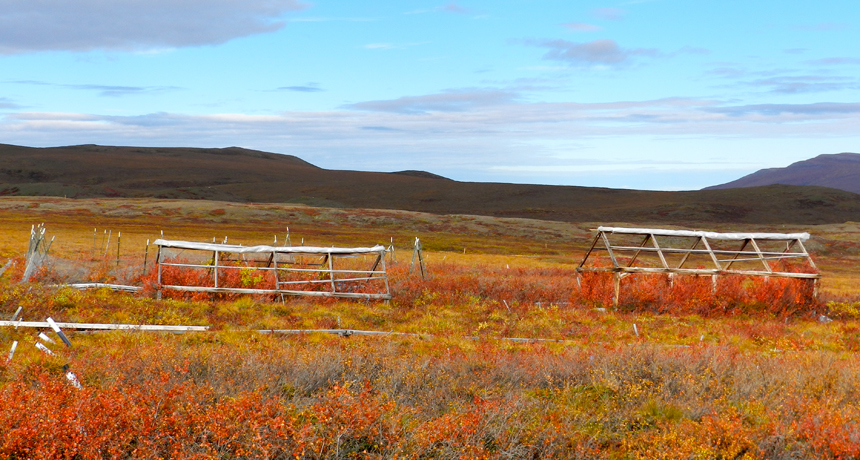Warming may not release Arctic carbon
Element could stay locked in soil, 20-year study suggests

TRUE GREENHOUSE GASES Researchers used greenhouses to artificially warm tundra (shown, in autumn) for 20 years. They found no net change in the amount of carbon stored in the soil.
Sadie Iverson






